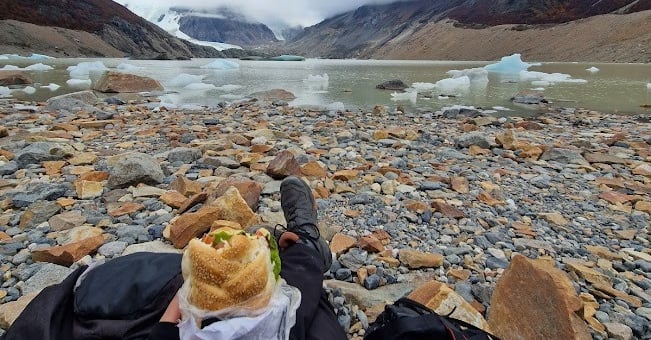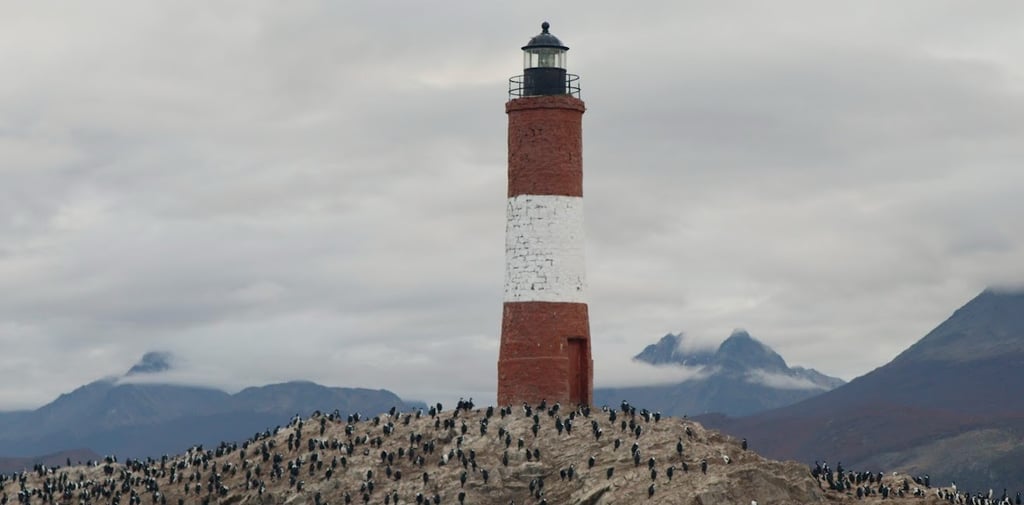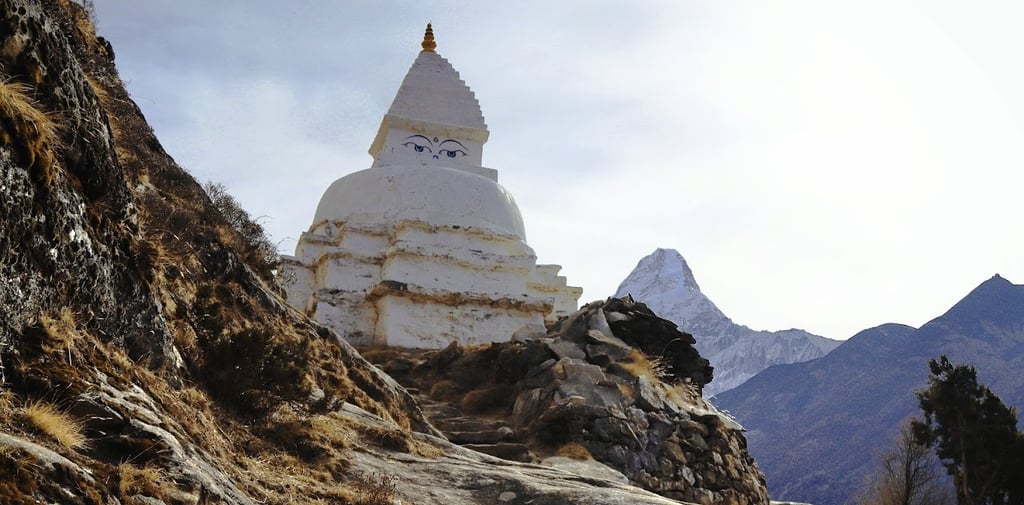Finding Harmony: Balancing Efficiency and Enjoyment on Long Hikes
Finding the right balance between hiking efficiently and truly enjoying the journey is key to making long-distance treks rewarding and sustainable. Here’s how you can optimize both!
SUSTAINABLE TRAVEL


Long-distance hiking is more than just covering miles—it’s about immersing yourself in nature, challenging your limits, and savoring every moment of the journey. Whether you’re trekking the Appalachian Trail, the Pacific Crest Trail, or any extended trail, striking the right balance between hiking efficiently and truly enjoying the experience is essential. Achieving this balance not only makes your trek memorable but also sustainable, both physically and mentally. Here’s an in-depth guide to help you master this art on your next adventure. Let’s dive into how you can hike smarter and savor the journey, so your adventure is both unforgettable and sustainable.
Plan Smart, But Keep It Chill
First things first—planning! I know, planning can sound like homework, but trust me, it’s your best friend on the trail. Start by getting to know your route. Check out maps, trail guides, and online forums. Figure out where you’ll find water, where you can restock food, and what kind of terrain to expect.
But here’s the secret: don’t over-plan. Life on the trail is full of surprises—maybe you’ll stumble upon a hidden waterfall or meet some awesome hiking buddies. Leave room for those magical moments by keeping your schedule flexible. Think of your plan as a helpful guide, not a strict rulebook.
Pro tip: Download offline maps on your phone and carry a paper map just in case. Getting lost is no fun, but having reliable navigation tools means less stress and more time enjoying the views.
Pack Light, But Bring the Good Stuff
Nothing kills the fun like a heavy backpack weighing you down. The lighter your pack, the easier (and more fun!) your hike will be. But don’t worry—you don’t have to sacrifice comfort or safety to go light.
Focus on multi-use gear: a jacket that’s both warm and water-resistant, a sleeping bag that packs small but keeps you cozy, and food that’s easy to carry and delicious to eat. And hey, don’t forget a little treat—a favorite snack, a good book, or your camera. These small joys keep your spirits high when the trail gets tough.
Before your trip, try hiking with your packed bag on shorter walks. This way, you can tweak what you bring and find the perfect balance.
Eat and Drink Like a Pro
Your body is your engine, and it needs good fuel to keep going. Pack snacks that give you steady energy—nuts, dried fruits, energy bars, and jerky are all great choices. When it comes to meals, pick options that are easy to prepare but tasty enough to look forward to after a long day.
Hydration is just as important. Carry a hydration bladder or bottles that you can sip from while walking. Don’t wait until you’re thirsty—drink regularly to stay energized and alert.
Snack Smart
Trail Mix: Nuts, seeds, dried fruit, and a bit of chocolate or M&Ms for a morale boost
Energy Bars: Choose bars with a good balance of carbs, protein, and fats
Jerky: High-protein and lightweight
Nut Butters: Single-serve packets of peanut or almond butter
Fresh Fruit: Apples or oranges that travel well (eat early in the hike)
Easy Meals
Dehydrated Meals: Lightweight and just add boiling water
Instant Oatmeal: Quick breakfast option; add nuts or dried fruit for extra energy
Couscous or Instant Rice: Cooks fast and pairs well with dehydrated veggies or tuna packets
Ramen or Pasta: Lightweight and filling; add olive oil or cheese powder for flavor and calories
Hydration Tips
Drink small amounts regularly rather than waiting until you’re thirsty.
Add electrolyte tablets or powders to your water to replace salts lost through sweat.
Always purify water from natural sources using a filter, purifier, or chemical treatment.
Quick Tips for Trail Food Success
Test Your Food: Try everything on shorter hikes to make sure you like it and it agrees with your stomach.
Balance Calories: Aim for a mix of carbohydrates (quick energy), protein (muscle repair), and fats (long-lasting energy).
Pack for Convenience: Foods that don’t require refrigeration or complicated cooking save time and hassle.
Don’t Forget Treats: A little chocolate, candy, or a favorite snack can boost morale on tough days.


Find Your Groove: The Perfect Hiking Pace
Here’s a little secret—there’s no “right” speed on the trail. The magic of long-distance hiking is that it’s a personal journey, and the best pace is the one that feels right for you. Some days you might wake up bursting with energy, ready to conquer miles with a spring in your step. Other days, you’ll want to take it slow, enjoying a steady stroll as you listen to birdsong and watch the sunlight dance through the trees. Both are perfectly okay!
Listen to Your Body
Your body is your best guide. Pay attention to how you’re feeling each day. Are your legs feeling strong? Is your pack sitting comfortably? Are you breathing easily? If you’re tired or sore, it’s not only okay but smart to slow down. Taking care of yourself means you’ll enjoy the journey so much more—and you’ll be less likely to get injured or burned out.
Try the “Ten Before Ten” Rule
A lot of experienced hikers swear by the “ten before ten” rule: try to cover ten miles before 10 a.m. Why? Early mornings are usually cooler and quieter, and you’re likely to have more energy after a good night’s sleep. Plus, getting a big chunk of your miles done early frees up your afternoon for longer breaks, exploring side trails, or just relaxing at a beautiful spot.
But remember, this is just a guideline, not a requirement! If ten miles before ten isn’t your style, that’s totally fine. Maybe you’re a night owl who likes to hike late, or maybe you prefer lots of short breaks. The important thing is to find what works for you.
Make Breaks Part of the Experience
Don’t be afraid to pause often. Take off your pack, stretch, have a snack, and soak in your surroundings. Some of the best trail moments happen during these little pauses—spotting a deer in the distance, discovering a hidden wildflower, or simply enjoying the peace and quiet.
Tune Into Your Rhythm
As you hike, try syncing your breath with your steps. This natural rhythm can help you move more efficiently and keep fatigue at bay. Some hikers like to count steps or hum a tune to keep their pace steady. Over time, you’ll find a stride that feels effortless, almost like your body and the trail are working together.
It’s easy to get caught up in numbers—miles per day, elevation gained, hours hiked. But remember, hiking isn’t a competition. The real goal is to enjoy the journey, notice the little things, and make memories along the way. Whether you’re moving fast or slow, you’re still moving forward, and every step is part of your adventure


Enjoy Every Moment (Yes, Even the Tough Ones!)
Long-distance hiking is a true adventure—one that takes you on an emotional journey as much as a physical one. You’ll experience moments of pure exhilaration: reaching a breathtaking summit, watching the sunrise from your tent, or feeling the quiet magic of a misty forest. But let’s be real—there will also be times when you’re tired, sore, or just plain grumpy. Maybe it’s raining for the third day in a row, or your feet are protesting every step. That’s all part of the ride!
Embrace Every Feeling:
Instead of fighting the tough moments, welcome them as part of your story. The challenges you face—whether it’s a steep climb, a long rainy stretch, or a bout of homesickness—are what make the journey meaningful. These are the experiences that teach you resilience, patience, and gratitude.
Capture the Memories:
Bring along a small journal or use your phone to jot down thoughts, funny trail moments, or sketches. Take plenty of photos, not just of the epic views but also the little things: your muddy boots, a quirky trail sign, or the cozy campfire at night. These details will bring your adventure to life when you look back.
Pause for Presence:
Sometimes, the best thing you can do is simply stop and soak it all in. Sit quietly, close your eyes, and listen to the wind in the trees or the distant call of a bird. Let yourself be fully present—you’ll be amazed at how these quiet moments become some of your most cherished memories.
Connect With Others:
Don’t be shy about striking up a conversation with fellow hikers or friendly locals. Share stories, swap tips, or just enjoy a laugh together. The trail community is full of fascinating people, and these connections can turn a tough day into a joyful one. Sometimes, a simple chat at a trail shelter or a shared snack can lead to lifelong friendships.
Turn Challenges Into Stories:
Remember, the hardest parts of your hike often make the best stories later on! That time you got caught in a downpour or took a wrong turn and ended up discovering a hidden lake—those are the moments you’ll laugh about and share for years to come.


Leave No Trace: Be a Trail Hero
We all want the trails we love to stay wild and beautiful for generations of hikers to come. That’s why practicing Leave No Trace (LNT) isn’t just a suggestion—it’s a responsibility for every outdoor adventurer.
Stick to the Path:
Always hike on marked trails, even if the ground is muddy or rocky. This helps protect fragile plants and prevents erosion. If everyone makes their own shortcut, the landscape quickly gets damaged.
Pack Out All Trash (Yes, Even the Little Stuff!):
Everything you bring in, you take out—no exceptions. That means food wrappers, tissues, and even organic waste like orange peels and apple cores. They might seem harmless, but they can harm wildlife and take years to decompose.
Respect Wildlife:
Observe animals from a distance and never feed them. Human food can be harmful to them, and feeding wildlife can change their natural behaviors. Remember, you’re a guest in their home.
Be Gentle With Nature:
Don’t pick flowers, carve your name in trees, or disturb rocks and logs. Leave things as you found them so others can enjoy the same sense of discovery.
Support Local Communities:
Being a trail hero isn’t just about the wilderness—it’s about the people too! When you finish a section or reach a trail town, choose to eat at local restaurants, buy supplies from small shops, or stay in family-run hostels. Your support helps these communities thrive and keeps the hiking culture alive.
In the end, enjoying every moment and leaving no trace go hand in hand. The more we appreciate the trail and its challenges, the more we want to protect it. So hike with heart, tread lightly, and let your adventure inspire others to do the same.
